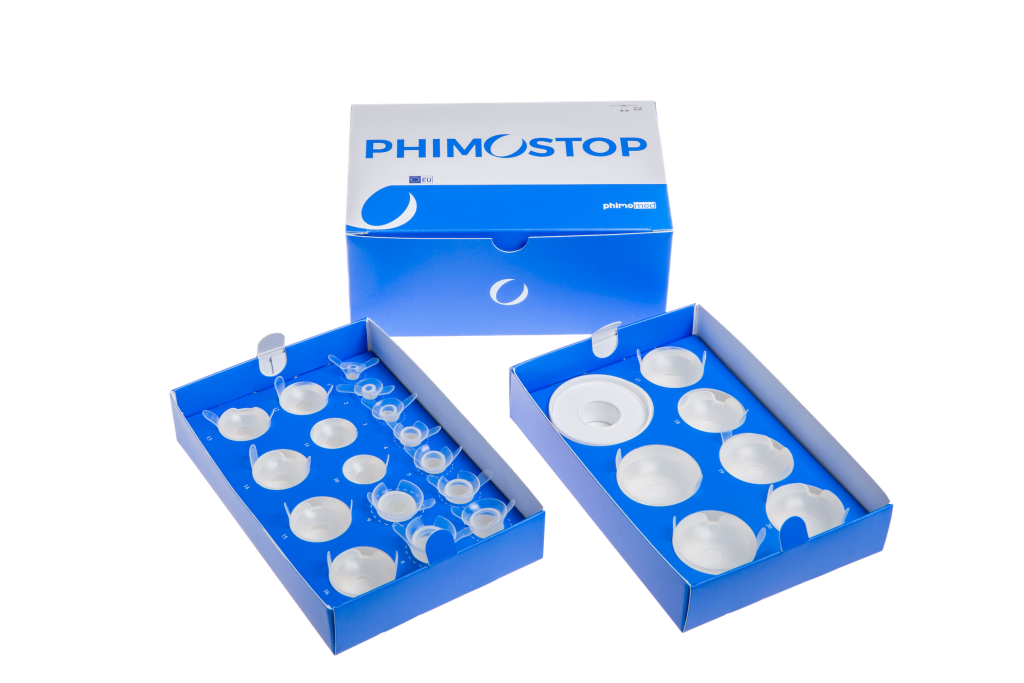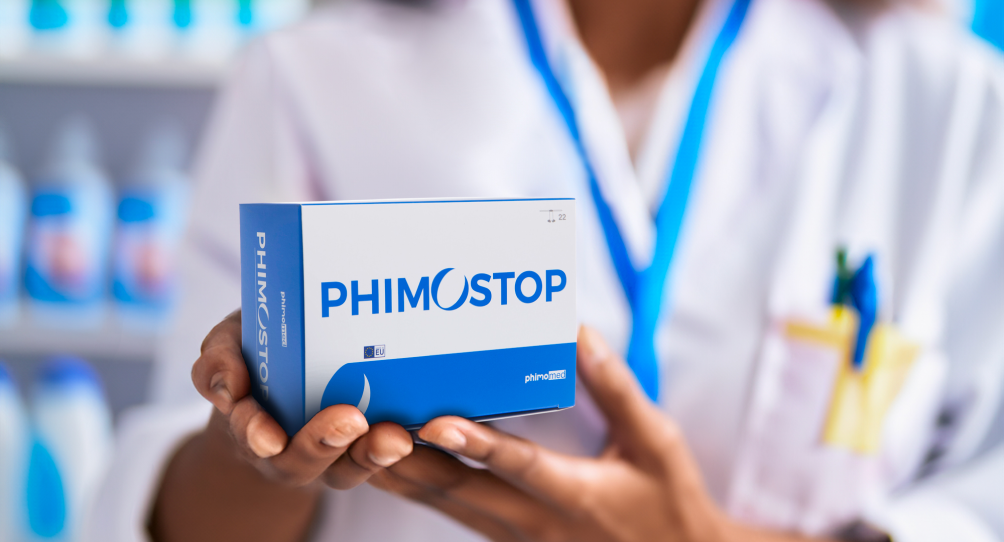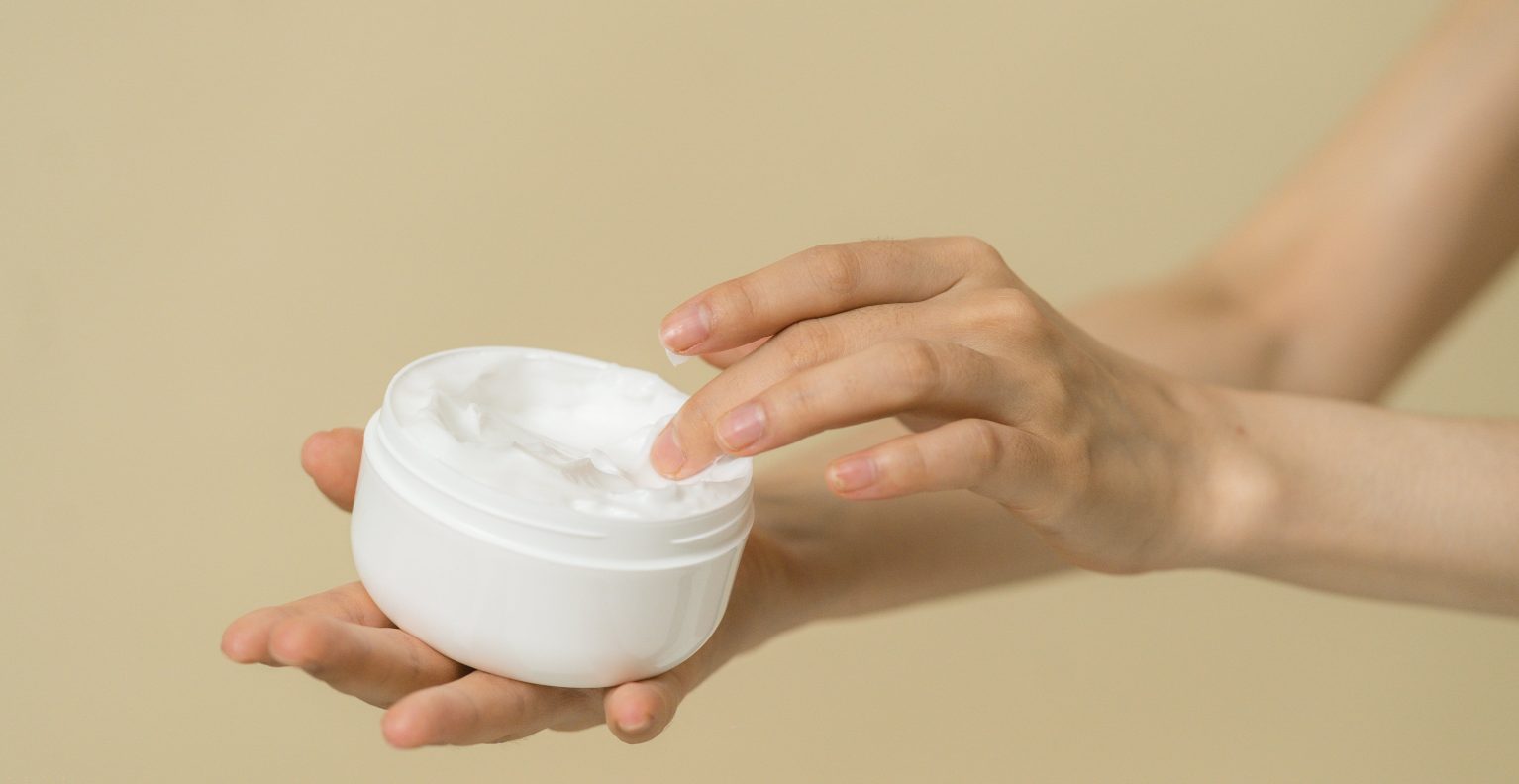14/02/2024 ![]() 6 minuti
6 minuti
Phimosis cream and ointment with steroids: functioning and effectiveness
In cases of congenital phimosis in youth, the use of phimosis creams is one of the recommended avenues before resorting to circumcision surgery. Such therapy intervenes mainly where there is not yet a phimotic ring, that is, where a “loop” of inelastic cells is not yet present, and its effects depend on the type of phimosis and the patient’s personal response.
In acquired phimosis in adulthood, on the other hand, there is the creation, after infection, of a phimotic ring of inelastic cells that creates a loop on the foreskin.
Although we always speak of phimosis, the two clinical cases are quite different and require very different therapies. In this article we will look at what phimosis creams are and when it is appropriate to use them.
Elasticizing phimosis treatment creams: why to avoid them
Circumcision surgery has been the traditional therapy for treating phimosis for years. For this reason, it often happens that those most hostile to the idea of undergoing surgery search online for information on other, less invasive remedies, finding numerous sites that mention elasticizing creams.
To understand whether and when it is appropriate to use elasticizing creams, it is first important to distinguish the type of phimosis, whether congenital or acquired. The former occurs when the foreskin develops more slowly than the glans; acquired phimosis, on the other hand, occurs due to the loss of elasticity of the foreskin as a result of the formation of a phimotic ring formed by inelastic cells.
Keeping this difference in the causes of the occurrence of phimosis in mind is crucial when considering using an elasticizing cream to facilitate preputial gymnastics. Results can be achieved with this maneuver when it is performed when the foreskin is still elastic, as in the case of congenital phimosis. Conversely, when the foreskin has lost its ability to stretch, performing preputial gymnastics can cause skin lesions to appear. Stretching exercises for phimosis not only offer nothing in terms of improving the situation, but can even complicate it. One wrong move can permanently damage the foreskin, causing infection, scarring, or worsening the symptoms of phimosis.
Steroid cream for phimosis
Another type of phimosis cream is steroid cream. The effect of steroid cream for phimosis is to create an antifibrotic and antiphlogistic action on the skin of the foreskin in order to facilitate the uncovering of the glans again.
From analysis, it appears that local application of a steroid cream makes the skin thinner and thus reduces the inflammatory component. Somehow it is this “side effect” of it that makes it useful for the treatment of congenital phimosis in youth.
In the case of acquired phimosis, there are those who think that the application of a simple ointment on the penis, with the associated exercise of the foreskin, helps solve the problem. This theory, however, has been disproved by numerous researches that have analyzed the treatment of phimosis with placebo (non-steroidal) ointments showing less than comforting results (positive under 20 percent).
Do phimosis treatment creams work? The scientific research
Scientific data in the field are always related to research on juvenile, congenital phimosis.
It is important to emphasize this precisely because phimosis in youth is quite different from phimosis in adulthood (congenital phimosis itself changes with age).
The international scientific research “The response of phimosis to local steroid application” by C. S. Kikiros, S. W. Beasley, and A. A. Woodward for the Department of General Surgery, Royal Children’s Hospital in Australia analyzed the effect of phimosis ointment therapy (three different types) applied to a young audience (up to 16 years of age) with varying degrees of congenital phimosis.
The conclusion of the analysis group was that local application of a steroid ointment on the foreskin produces resolution of juvenile congenital phimosis in more than 60 percent of cases, but if the foreskin has a white circumferential scar (phimotic ring), it has a lower probability of responding to treatment. After cessation of steroid cream, phimosis developed again in a percentage of patients.
The success or failure of treatment with phimosis ointments depends on:
- The age of the patient (validity data only on patients under 16 years of age);
- Type and severity of phimosis (only on congenital phimosis, at a young age);
- Correct application of the ointment;
- Compliance with the treatment;
- The mode of application.
In some cases, foreskin retractability may diminish after a few months, and further applications of steroid ointment are therefore advisable. Proper serum glucose control is important in patients with diabetes.
The above data can also be found in other publications:
- Pless TK., Spjeldnaes N., Jorgensen TM. Topical steroid in the treatment of phimosis in children.
- Ugeskr Laeger, 1999;
- Jorgensen ET., Svensson A. The treatment of phimosis in boys, with a potent topical steroid cream. Acta Derm Venereal, 1993;
- Golubovic Z., Milanovic D., Vukadinovic V., Rakic I. and Perovic S. The conservative treatment of phimosis in boys. Br J Urology, 1996;
- Atilla MK. et al. A non surgical approach to the treatment of phimosis: local nonsteroidal anti-inflammatory ointment application. J of Urology, 1997;
- Van Howe RS. Cost-effective treatment of Phimosis. Pediatrics 1998;
- Rickwood Am., Walter J. Is phimosis overdiagnosed in boys and are too many circumcision performed in consequence? Ann R Coll Surg Engl, 1989.
PHIMOSTOP
Treats Phimosis without Circumcision
Phimostop is a medical device composed of 22 medical silicone elements designed to help resolve phimosis, a condition in which the foreskin cannot be fully retracted onto the glans of the penis.
Discover the product
How to treat phimosis in adulthood with Phimostop
As we have repeatedly pointed out, most research is done on young audiences, where phimosis is often in its early state and is mostly congenital (i.e., where there is no phimotic ring resulting from inflammation and preputial scarring).
For adults, given the different types of phimosis (largely acquired) and the mature state of the penis, physicians often directly suggest circumcision.
Phimostop, on the other hand, may be the right alternative to phimosis surgery.
Underlying Phimostop is a well-established principle – the natural ability of epidermal tissue to change as a result of persistent progressive dilation – and the European patent (with gold medal at the International Exhibition of Inventions), as well as validation by the Ministry of Health, confirm its validity.
Compared with cream and ointment therapy, Phimostop offers a device that intervenes deeply on phimosis, freeing the foreskin from the phimotic ring, with healing times, often, much faster (10 days for average phimosis, but varying subjectively).
Phimostop intervenes on the inelastic cells of the phimotic tissue by rarefying them and stimulating the creation of new elastic cells. The ease of use allows the device to be worn during the day and/or night without restriction in daily activities, including sports. Finally, the tuboids allow consolidation of the result obtained and, after proper washing, can be used again over time in rare cases of recurrence.
Phimostop represents the only medical device approved by the Italian Ministry of Health for the non-surgical treatment of phimosis.

Want to know more?




